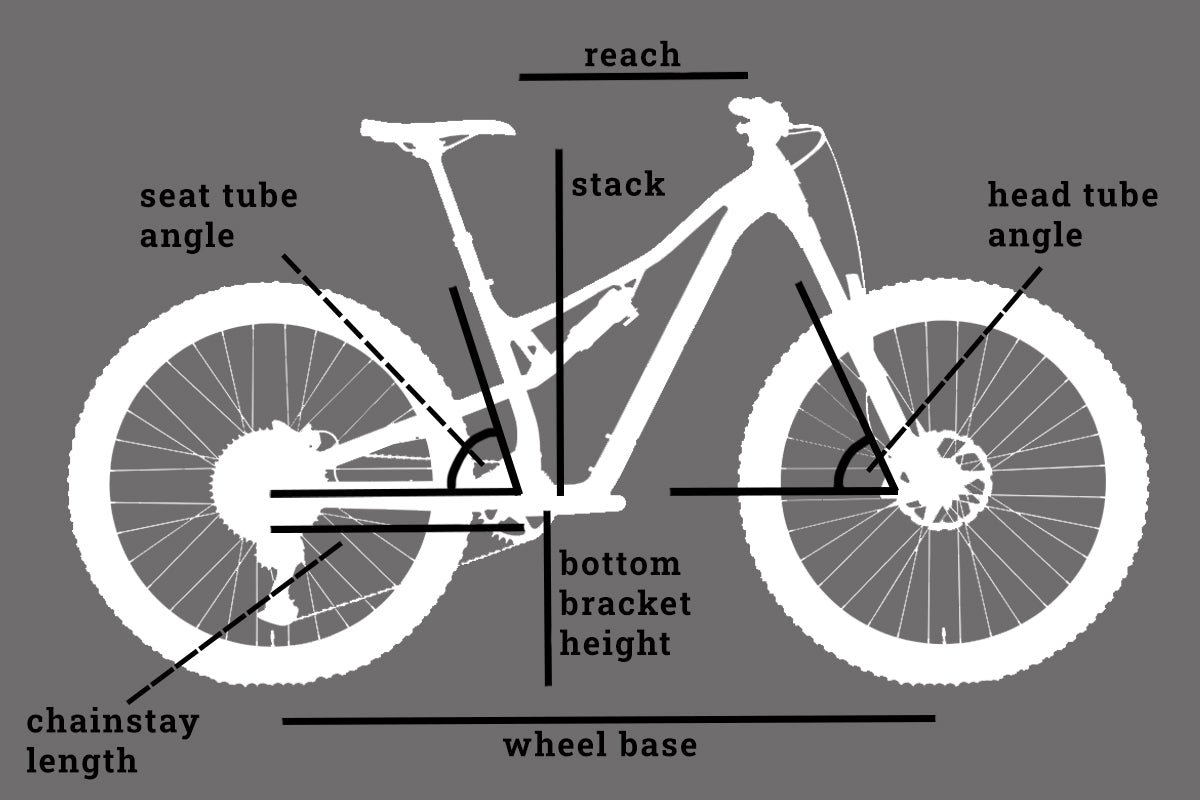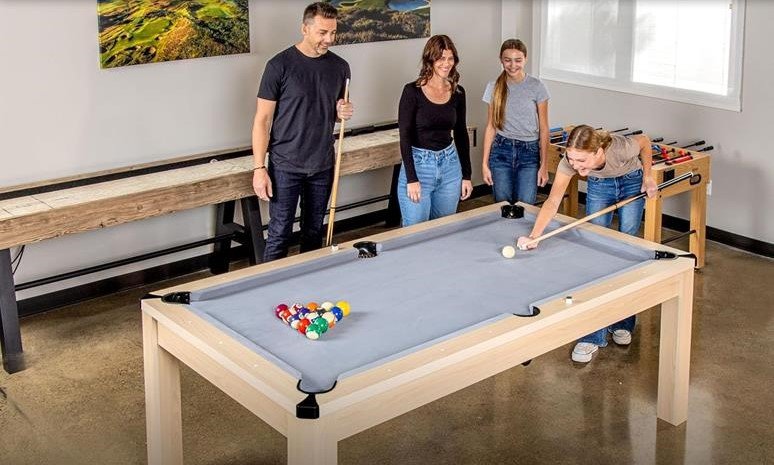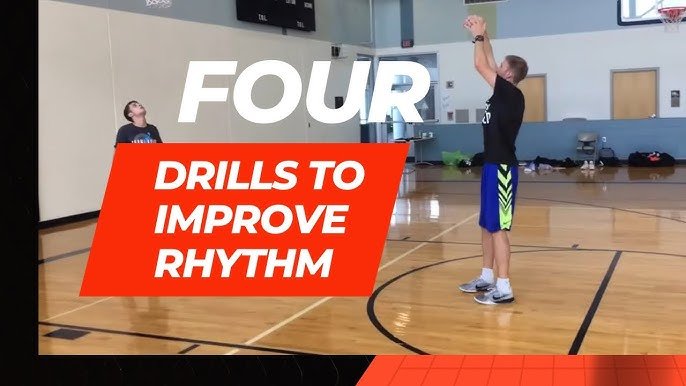Choosing the right mountain bike can feel overwhelming. You want a bike that fits your style, handles rough trails, and feels comfortable every time you ride.
But with so many options out there, how do you know which one is truly right for you? This guide will help you cut through the confusion and find a mountain bike that matches your needs perfectly. By the end, you’ll feel confident and excited to hit the trails on a bike made just for you.
Keep reading to discover the key factors that will make your choice easy and rewarding.
Types Of Mountain Bikes
Mountain bikes come in different types. Each type suits a different kind of riding. Knowing these types helps you pick the right bike.
Here, we explain the main types of mountain bikes. This will guide you to choose the best fit for your needs.
Cross-country Bikes
Cross-country bikes are light and fast. They work well on smooth trails and long rides. These bikes often have a hardtail design, meaning no rear suspension.
Trail Bikes
Trail bikes are versatile and popular. They handle rough trails and climbs with ease. These bikes have front and rear suspension for comfort and control.
- Good for most mountain trails
- Balanced between speed and control
- Comfortable on long rides
- Can handle moderate jumps and drops
Enduro Bikes
Enduro bikes focus on downhill speed and climbing ability. They are heavier and stronger than trail bikes. These bikes have more suspension travel for rough terrain.
| Feature | Enduro Bikes |
| Suspension Travel | 140-170 mm |
| Weight | Heavier |
| Use | Downhill and climbing |
| Frame | Strong and durable |
Downhill Bikes
Downhill bikes are built for steep and fast descents. They have the most suspension and strong brakes. These bikes are heavy and designed for rough, technical trails.
- Long suspension travel (170-200 mm)
- Very strong frame and components
- Powerful brakes
- Not made for climbing

Frame Material Options
Choosing the right frame material is important for your mountain bike. It affects weight, strength, and ride feel.
Different materials offer different benefits. Learn about common frame materials before buying your bike.
Aluminum Frames
Aluminum frames are light and strong. They are popular for many mountain bikes.
These frames resist rust and are affordable. They provide a stiff ride but can feel a bit harsh.
Carbon Fiber Frames
Carbon fiber frames are very light and strong. They absorb bumps well for a smooth ride.
These frames are more expensive. They are ideal for serious riders who want speed and comfort.
Steel Frames
Steel frames are heavy but very durable. They offer a comfortable and flexible ride.
Steel can rust if not cared for. It is a good choice for riders who want a strong frame.
Titanium Frames
Titanium frames are light and very strong. They do not rust and last a long time.
These frames cost more but offer a smooth and comfortable ride. They are great for serious mountain bikers.
Suspension Choices
Choosing the right suspension is key for mountain bike comfort and control. Suspension helps absorb bumps and rough trails.
There are different types of suspension systems for different riding styles and terrains. Understanding these helps you pick the best bike.
Hardtail Bikes
Hardtail bikes have a suspension fork in the front only. The back frame is rigid and does not move.
This design is lighter and easier to maintain. It works well on smooth trails and climbs.
- Less expensive than full suspension bikes
- Good for cross-country and beginner riders
- Better power transfer to pedals
Full Suspension Bikes
Full suspension bikes have shocks on both the front and rear wheels. They absorb more impact on rough trails.
This makes riding smoother and reduces rider fatigue. They are heavier and cost more than hardtails.
- Better control on technical and downhill trails
- Improved comfort on long rides
- More complex maintenance
Suspension Travel Explained
Suspension travel is how far the suspension moves to absorb bumps. It is measured in millimeters.
More travel means better shock absorption but less pedaling efficiency. Less travel is lighter but less smooth on rough trails.
| Travel (mm) | Best Use |
|---|---|
| 80-120 | Cross-country riding, smooth trails |
| 120-150 | Trail riding, mixed terrain |
| 150-180 | All-mountain, rough trails |
| 180+ | Downhill, very rough terrain |

Wheel Size Considerations
Choosing the right wheel size is important for a mountain bike. The wheel size affects speed, control, and comfort. Pick a size that fits your riding style and terrain.
There are three common wheel sizes: 26-inch, 27.5-inch, and 29-inch. Each size has benefits and drawbacks. Learning about each helps you make a good choice.
26-inch Wheels
26-inch wheels are the smallest common size for mountain bikes. They are quick to accelerate and easy to maneuver on tight trails. These wheels are lighter and fit smaller riders well.
They work best for technical trails and riders who want more control. However, they roll over obstacles less smoothly than larger wheels.
27.5-inch Wheels
27.5-inch wheels offer a mix of speed and control. They roll over bumps better than 26-inch wheels but stay nimble for sharp turns. Many riders find this size a good balance.
These wheels fit most riders and trail types. They work well for cross-country and trail riding. This size is popular because of its versatility.
29-inch Wheels
29-inch wheels are the largest size used on mountain bikes. They roll over obstacles easily and keep speed on rough ground. These wheels give more traction on loose surfaces.
They may feel slower to accelerate and less nimble in tight turns. Bigger riders or those riding long distances often like 29-inch wheels.
Fit And Sizing Tips
Choosing the right mountain bike size is key for a good ride. A bike that fits well feels comfortable and safe.
Focus on frame size, seat and handlebar adjustments, and test rides to find your best fit.
Frame Size Measurement
Frame size depends on your height and leg length. It affects your riding position and control.
Measure your inseam to help pick the right frame size. Use this simple method to check.
- Stand with your feet 6 inches apart
- Measure from the floor to your crotch
- Compare this number to the bike frame size chart
- Choose a frame that fits your inseam length
Adjusting Seat And Handlebars
Seat height and handlebar position change how you ride. Proper adjustments improve comfort and control.
Check seat height by sitting and placing your foot on the pedal. Your leg should be almost straight at the bottom.
- Raise or lower the seat for leg comfort
- Adjust handlebars for a natural arm bend
- Make small changes and test each time
Test Riding For Comfort
Test rides help you feel if the bike fits well. Ride on different surfaces to check comfort and handling.
Pay attention to how your body feels. Stop if you feel pain or discomfort.
- Try riding uphill and downhill
- Check if you can reach brakes easily
- Feel if the bike handles turns smoothly
- Make notes on fit and comfort
Gear And Drivetrain Options
Choosing the right gear and drivetrain affects how your mountain bike rides. These parts help you pedal smoothly on different terrains.
Understanding gear types and shifting systems can make your rides easier and more fun. You also need to keep your drivetrain well maintained.
Single Vs. Multiple Gears
Single-gear bikes have one gear ratio. They are simple and lighter but less flexible on steep hills. Multiple-gear bikes offer many gears. They help you ride uphill and downhill with ease.
- Single gears need less maintenance
- Multiple gears provide more speed options
- Choose single gear for flat trails
- Choose multiple gears for varied terrain
Shifting Systems
There are two main shifting systems: trigger and grip shifters. Trigger shifters use levers to change gears. Grip shifters twist like a handle. Both help you change gears quickly.
| Shifting System | How It Works | Best For |
| Trigger Shifters | Levers pushed by thumb or finger | Precise shifting on rough trails |
| Grip Shifters | Twist handle to shift gears | Simple and easy to use |
Maintenance Tips
Keeping your gears and drivetrain clean helps your bike work well. Dirt and rust can cause poor shifting and wear out parts fast.
- Clean the chain and gears after muddy rides
- Lubricate the chain regularly
- Check gear cables for wear or rust
- Adjust derailleurs to keep smooth shifting
- Replace worn parts to avoid bigger damage
Brake Systems
Choosing the right brake system is important for mountain bike safety. Good brakes help you stop quickly and control your speed.
There are different types of brakes. Knowing their features helps you pick the best one for your ride.
Disc Brakes
Disc brakes use a metal disc attached to the wheel. Pads squeeze the disc to slow down the bike.
They work well in wet and muddy conditions. Disc brakes give strong stopping power and good control.
Hydraulic Vs. Mechanical
Hydraulic brakes use fluid to push the pads. They offer smooth and strong braking with less effort.
Mechanical brakes use cables to move the pads. They are easier to fix and cost less but need more hand strength.
- Hydraulic brakes:Better power, smooth feel, more complex
- Mechanical brakes:Simpler, cheaper, less power
Brake Maintenance
Keep your brakes clean and check them often. Dirt and wear can reduce brake performance.
Check brake pads for wear and replace if thin. For hydraulic brakes, check fluid levels and bleed if needed.
- Clean discs and pads regularly
- Check cable tension on mechanical brakes
- Replace worn brake pads
- Bleed hydraulic brakes yearly
Budgeting Your Purchase
Buying a mountain bike needs planning for your budget. Bikes come in different price ranges.
Knowing your budget helps you find the right bike for your needs and wallet.
Entry-level Bikes
Entry-level bikes are best for beginners or casual riders. They cost less and have basic features.
These bikes are good to start with and learn the basics of mountain biking.
- Price range: usually $300 to $700
- Simple parts and materials
- Heavier frame but durable
- Good for light trails and city rides
Mid-range Options
Mid-range bikes suit riders who want better parts and more comfort. They cost more than entry-level.
These bikes handle rougher trails and offer better control and durability.
- Price range: about $700 to $1500
- Lighter frame and better suspension
- Improved brakes and gears
- Good for regular trail riding
High-end Models
High-end mountain bikes are for serious riders and racers. They use top-quality parts and materials.
These bikes are lightweight, strong, and perform well on tough trails.
- Price range: $1500 and up
- Carbon or high-grade aluminum frames
- Advanced suspension and hydraulic brakes
- Designed for speed and rough terrain
Essential Accessories
Choosing the right mountain bike is important, but having the right accessories makes your ride safer and more fun. Essential accessories help you prepare for different situations on the trail.
Below are key accessories every mountain biker should consider. These items improve safety, convenience, and comfort during your rides.
Helmets And Safety Gear
Wearing a helmet protects your head in case of falls or accidents. Safety gear includes gloves, knee pads, and elbow pads to protect your body.
- Choose a helmet that fits snugly and meets safety standards.
- Gloves improve grip and protect your hands from scrapes.
- Knee and elbow pads reduce injury from falls.
- Wear bright or reflective clothing for better visibility.
Repair Kits
Repair kits help fix common problems like flat tires and loose chains. Carrying one can save you time and trouble on the trail.
| Item | Purpose | Why It Matters |
| Spare Tube | Replace flat tires | Prevents being stranded |
| Patch Kit | Fix small tire holes | Lightweight and easy to carry |
| Multi-tool | Adjust bolts and screws | Allows on-the-spot repairs |
| Tire Levers | Remove tires from rims | Makes tire changes easier |
| Mini Pump or CO2 Inflator | Inflate tires | Restores proper tire pressure |
Hydration And Storage
Staying hydrated is key for long rides. Storage options let you carry water, tools, and snacks comfortably.
Common hydration and storage accessories include:
- Water bottles and cages
- Hydration packs with built-in water reservoirs
- Frame bags for tools and snacks
- Saddle bags for small repair items
- Handlebar bags for easy access to essentials

Frequently Asked Questions
What Features To Look For In A Mountain Bike?
When choosing a mountain bike, prioritize suspension type, frame material, and wheel size. Consider your riding style and terrain preferences. Look for reliable brakes and comfortable gearing. Ensure the bike fits well for better control. Test ride several options to find the best match for your needs.
How Much Should I Spend On A Mountain Bike?
Mountain bikes can range from $300 to several thousand dollars. Determine your budget based on your riding frequency and terrain. Entry-level bikes are suitable for beginners, while advanced riders may invest more. Prioritize quality over price to ensure durability and performance.
Look for sales and discounts to maximize value.
What Size Mountain Bike Do I Need?
Choosing the right size is crucial for comfort and control. Measure your height and inseam for accurate sizing. Manufacturers often provide size charts to guide you. A test ride will confirm the fit. Consider adjustable components like seat height and handlebar position for personalized comfort.
Are Full-suspension Bikes Worth It?
Full-suspension bikes offer better control and comfort on rough terrains. They absorb shocks, reducing rider fatigue. They are ideal for challenging trails and downhill rides. However, they are more expensive and heavier than hardtails. Evaluate your riding style and terrain to decide if the investment is worthwhile.
Conclusion
Choosing the right mountain bike makes your rides more fun and safe. Think about where you will ride most often. Consider the bike’s size, weight, and type carefully. Test a few models to feel what suits you best. Remember, comfort and control matter a lot.
Take your time to decide. A good bike will help you enjoy the trails more. Start your mountain biking journey with confidence and joy.


